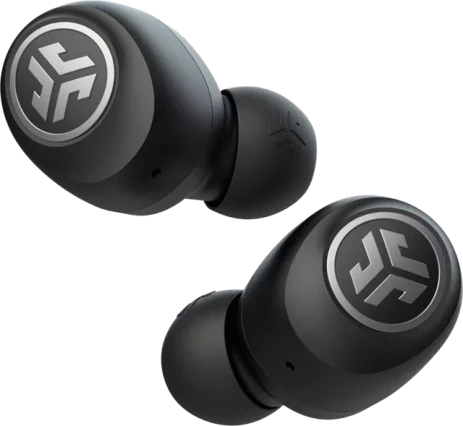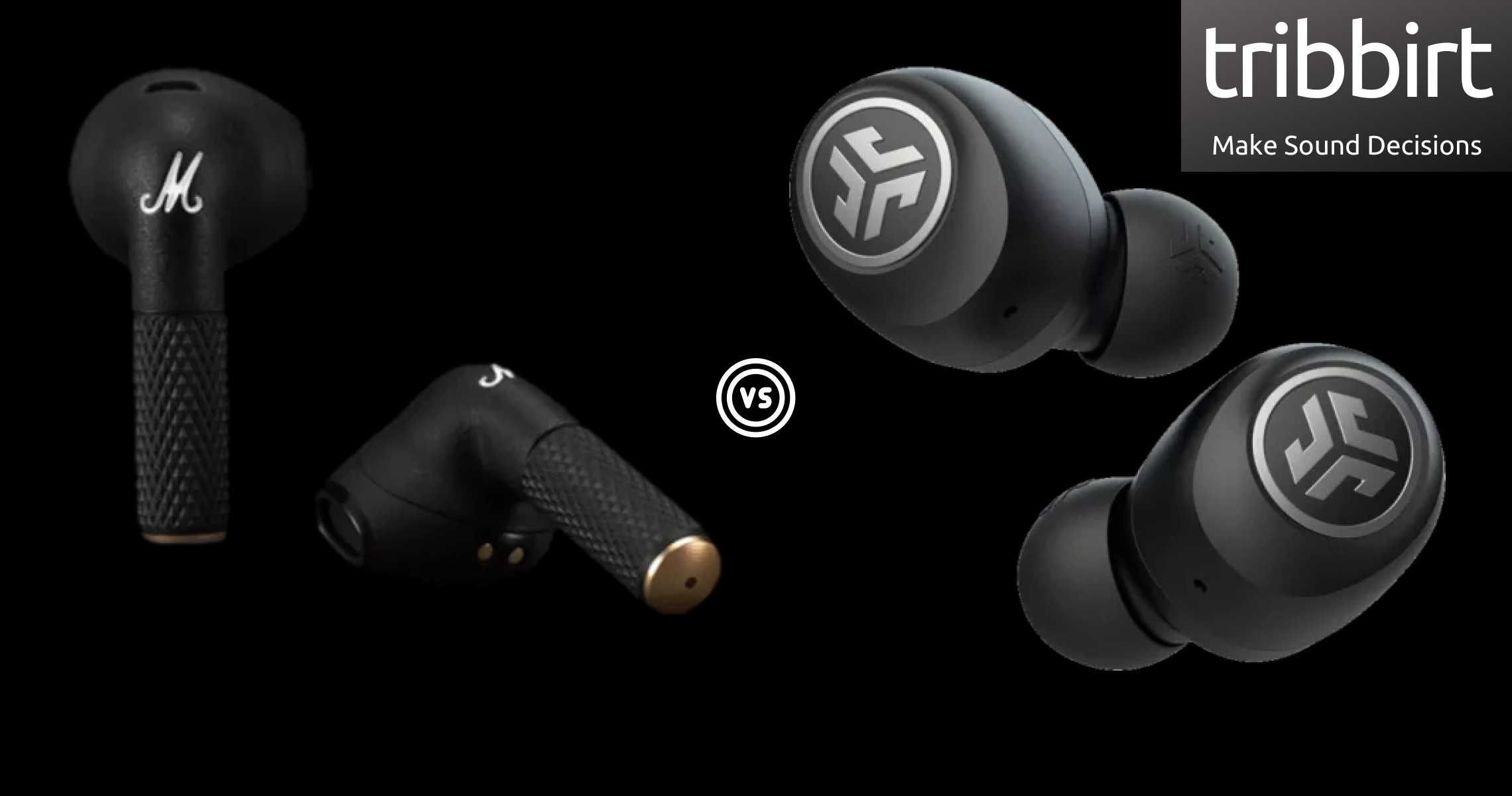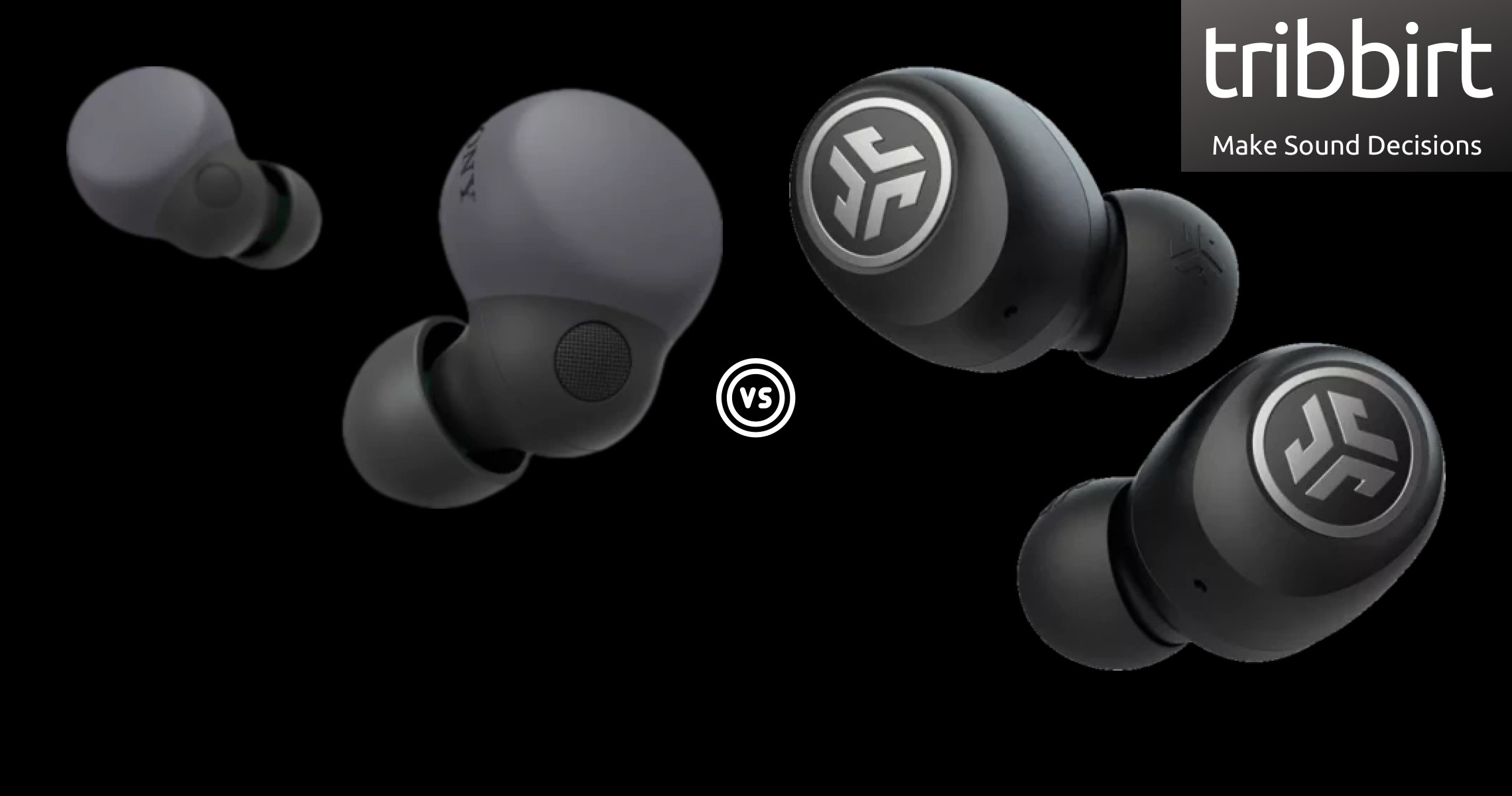Ingress protection ratings is the level of protection given by a casing, against solids and liquids. In the format of IPXX, 'X' represents a number The first value refers to protection against solids such as dust, while the second refers to resistance against liquids (water).
Having a value of IP44, the JLab Go Air's rating for solids indicates that they are protected against objects greater than 1.0mm such as wire, and of liquids that they can withstand low pressure spray similar to that of a shower head when tilted at 180° for 10 minutes. In comparison to the JLab Go Air, JBL Reflect Aero have a rating of IP68 meaning that
JBL Reflect Aero has a higher dust resistance than JLab Go Air
and that of liquids is that,
JLab Go Air has a lower liquid rating than JBL Reflect Aero
The JLab Go Air have a weight of 10g . We take in account a lower weight best because lighter devices are more comfortable to carry.
The JBL Reflect Aero, at 13g
weigh more than the JLab Go Air with a difference of 3g
For a device to be true wireless it must have no wires linking any part of the device together, JLab Go Air are true wireless for this matter since they don't have cables. This is a key distinction since wireless earbuds have cables linking the 2 earbuds together. JBL Reflect Aero also is true wireless since it doesn't have wires connecting the two earbuds .
JLab Go Air have sweat resistance
JBL Reflect Aero's resistance to sweat makes both devices good for use while doing sports such as long-distance running, marathons, training in workout bodysuits, etc
JLab Go Air have stereo speakers, devices with stereo speakers deliver sound from independent channels on both left and right sides, creating a richer sound and a better listening experience.
Both JBL Reflect Aero and JLab Go Air have stereo speakers
JLab Go Air sit tightly in place, creating a sound covering that reduces your environment noise and also prevents the earbuds sound from leaking out at the same. Both of these devices have passive noise reduction this implies that both reduce ambient noise instead of actively using technology to cancel it out. JLab Go Air driver unit is 8mm in diameter, bigger drivers are more powerful, and can produce better bass.
A driver unit is basically a mini speaker that produces sound in the device, the unit size dictates the sound produced by the device. JBL Reflect Aero driver unit is 6.8mm in diameter,
which means that they have a smaller driver unit than that of JLab Go Air by 1.2mm
, many people have a misconception that driver units of a bigger size automatically produce better sound quality.
However, large drivers usually have difficulty producing high frequencies so it's true that, larger drivers can generate louder sound, but this does not indicate that they produce better quality sound.
The JLab Go Air's lowest frequency is at 20Hz, low-frequency response measures if and how well a particular audio component generates low recognizable frequencies and if it alters the signal on its way through. JBL Reflect Aero's lowest frequency is at 20Hz, this means that
both devices can produce equal bass
JLab Go Air's highest frequency is at 20,000Hz, high-frequency response tells how well a particular audio component makes high audible frequencies and if it makes any changes to the signal on its way through. JBL Reflect Aero's highest frequency is at 20,000Hz, this implies that
both devices generate equal treble
The sound pressure level, is the level of pressure of sound, in decibels, dB, JLab Go Air's measurement is 103dB/mW.
Devices with a higher sound pressure level are generally louder when supplied with any given audio source. JBL Reflect Aero's sound pressure level measurement is 99dB/mW. The sound pressure level, something is can be perceived differently by different persons, so we need to have a way of getting an objective measurement of sound level expressed in numerical terms.
The JLab Go Air's battery life is 5 hours, these last less than 5 hours of listening which is considered average for a single charge. A device's battery life is commonly given by the manufacturer, and with more battery hours, you get to use it for longer and requires fewer chargings. JBL Reflect Aero's battery life is
more than that of JLab Go Air by 3 hours
. Each time you recharge your device, they get a little less listening time.
The effect is not noticeable at first, but over time, your wireless earbuds will no longer play for long like they used to. This is given by the manufacturer, and JLab Go Air's case is said to have a charge of 15 hours. A charging case with a longer battery life enables you to recharge your earbuds on the go multiple times before recharging the case itself.
JBL Reflect Aero's charging case has a battery life of 16 hours,
more than that of JLab Go Air by 1 hours
It takes 1.5 hours to fully charge the JLab Go Air's battery. It is highly adivsable to charge fully the battery before using the earbuds for the first time. JBL Reflect Aero takes 1.5 hours to fully charge the battery,
equal to that of the JLab Go Air
The JLab Go Air have a battery level indicator, an indicator shows you when the device has a low battery.
Its lights indicate the charging state of your device and charging case. JBL Reflect Aero too have a battery level indicator, these allow you to determine the charging state of your device, if charged fully, or the battery is running low. JLab Go Air have Bluetooth version of 5, Bluetooth is a wireless technology standard that enables data movement between devices placed in range, using short-wavelength, ultra-high frequency radio waves.
JBL Reflect Aero has a Bluetooth version of 5.2,
newer than that of JLab Go Air
. Newer versions provide faster data transfers. The JLab Go Air have a 10meters distance connecting via Bluetooth. JBL Reflect Aero have a maximum range of 10meters,
equal to that of the JLab Go Air
The JLab Go Air have 2 microphones.
The JBL Reflect Aero microphones are 6,
more than that of JLab Go Air by 4
. More microphones result in better sound quality and help the earbuds to filter out noise. JLab Go Air microphone sensitivity is measured at -38dBV/Pa. The amount of the analog or digital output signal from the microphone with its input stimulus is a calculation of its sensitivity.
It's the 'loudness' of the voice that the earbud microphone can pick up. The JLab Go Air, so you can easily access the volume control, pause, play, mute, etc whichever functions are supported on the device. The JBL Reflect Aero also have a control panel on them.
JLab Go Air have a warranty period of 2 Years, the period of time that warrant free repair and adjustment services in case of a malfunction occurring under normal use that has followed instruction manuals. The JLab Go Air support voice prompts. With voice prompts, you receive information through audio messages, like if there is a problem with the connection.
The JBL Reflect Aero too have voice prompts .i.e the earbuds notifies you if the battery is running low, and you need to recharge them.













